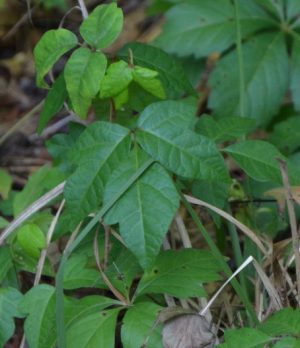
By Les Harrison
Wakulla County Extension Director
The spring-like temperatures and clear blue skies serve as a near irresistible enticement to enjoy Wakulla County’s natural environs. The springs, forest and coastline each have a unique charm and attraction for most.
With all the anticipation, there has to be a word of caution to check for signs which may indicate a problem. To be sure, be aware there is a sign of three leaves in a cluster which must be considered by all who venture outdoors.
Three leafed vines and small shrubs abound in the untended areas of Wakulla County, and occasionally creep into the cultivated areas of home landscapes. Most cause no problems for those who encounter the unknown visitors, but a few will deliver pain and irritation.
Poison ivy (Toxicodendron radicans) and poison oak (Toxicodendron pubescens) both lurk in wait of unsuspecting victims. Both native plants produce urushiol, a plant oil which will cause a severe skin rash when any part of the plant is contacted.
Allergic reaction occurs by touching these plants or by physical exposure to the oil on animals, tools, clothes, shoes, or other items which have struck either plant. Even the smoke from burning the plants contains oil particles which can be inhaled causing lung and airway irritation.
Poison ivy grows in shady or sunny locations throughout the Big Bend region and Florida. It can be a woody shrub up to 6 feet tall or a vine up to 150 feet tall that climbs high on trees, walls, and fences or trails along the ground.

All parts of poison ivy, including the hairy-looking aerial roots, contain urushiol at all times of the year, even when bare of leaves and fruit in winter. Plants are common along old, unmanaged fence rows and the edges of paths and roadways.
Leaf forms are variable among plants and even among leaves on the same plant; however, the leaves always consist of three leaflets. Leaflets can be two to six inches long and may be toothed or have smooth edges.
The leaves emerge with a shiny reddish tinge in the spring and turn a dull green as they age in the summer. They turn shades of bright red or purple in the autumn before dropping to the forest floor.
Poison oak is a low-growing, upright shrub which reaches about three feet tall. It is found in dry, sunny locations and unlike poison ivy does not tolerate heavy shade.
Like its botanical cousin, a single poison oak leaf consists of three leaflets. Distinguishing features included its lobed leaves, which give it the appearance of an oak leaf and the leaf stems and leaflets have a coating of fine hair.
Leaflets emerge with a reddish tinge in the spring, turn green, and then turn varying shades of yellow and red in the late fall before dropping.
While the weather has almost everyone itching to spend hours outside, just be sure the experience does not cause a rash of bad memories.
To learn more about poison ivy and poison oak in Wakulla County, contact the UF/IFAS Wakulla County Extension Office at 850-926-3931 or https://blogs.ifas.ufl.edu/wakullaco/.
 0
0
